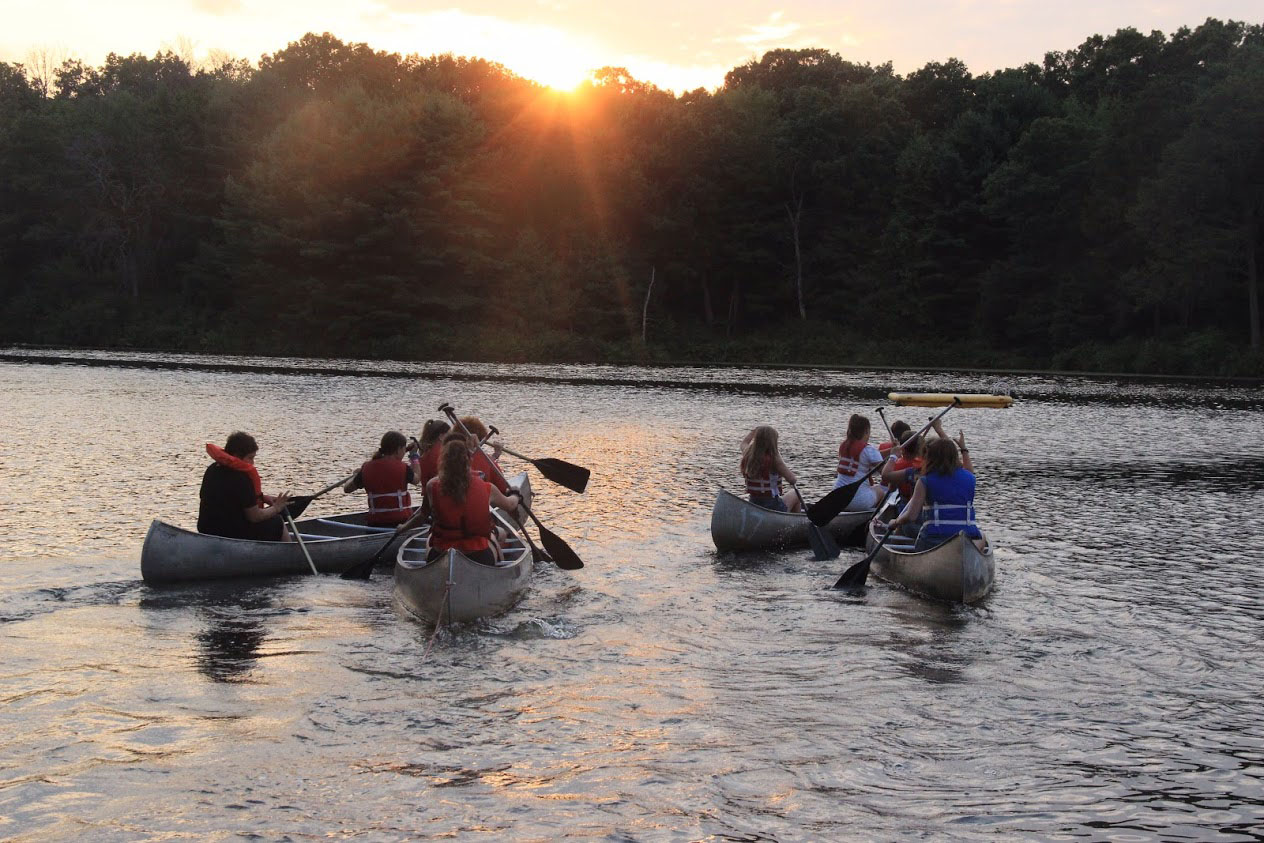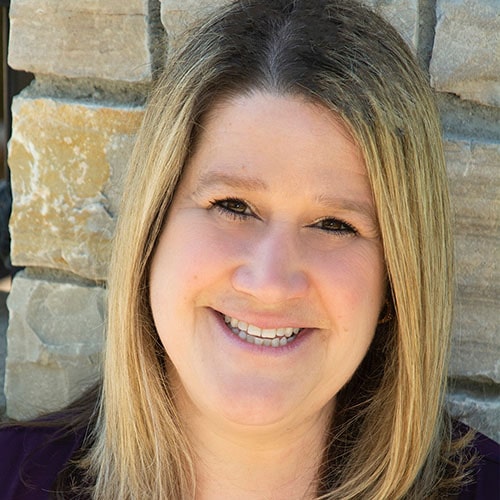 Photo from Camp Chi Facebook page
Photo from Camp Chi Facebook page It is always exciting to be asked to talk about inclusion. It’s a topic I’m passionate about and has become part of the way I think, teach, and live.
My journey started before I knew what inclusion really meant.
As a kid I was lucky to have Camp Chi as my Jewish camp experience and my summer home, learning incredible lessons that shaped me into the person I am today.
Camp is where I learned about that an ideal Jewish community is one where people are accepted for who they are while respecting their differences.
Likewise, it was a place that allowed me to be who I truly was. I can remember, as a camper, the feeling of being accepted, which gave me the ability to look at others and learn acceptance, empathy, and cooperation.
I spent many years as a camper and counselor, but after spending a year studying in Israel, I decided I was going to stay home the next summer.
I needed a job and, of course, wanted to work at a camp…so when a friend asked me to come at work as a counselor for Keshet I didn’t hesitate.
I knew I was going to be with a camper with special needs, but I was more excited than apprehensive as it would be a new experience for me.
I had never worked with individuals with disabilities, but had a strong belief that everyone should be able to go to camp.
Working for Keshet was a life changing experience for me.
It brought my passion for camp and my passion for working with children with disabilities together. It was the beginning of my journey to make Jewish camp a community that was welcoming to all.
Camp has helped me to decide who I am, what I could do and what path my life could take. It was a home I was welcomed into and a home I felt a part of.
It’s really not so different from how many people feel about their synagogue. The Torah states that each of us is created B’tzelem Elohim, in the image of god, and describes the hospitality of Abraham and Sarah welcoming strangers to their home. Yet, there are Jews with physical, developmental, emotional, cognitive and other disabilities who do not have the opportunities to participate in the richness of Jewish life.
This is because multiple barriers still exist in the attitudes, exposure, and acceptance of congregants. Individuals with disabilities are often still unable to access their congregations.
However, when those barriers are eliminated, many Jews with disabilities find warmth, a sense of belonging, and feel welcomed in their Jewish community.
I was Lauren’s teacher and remember the joy she had for singing in davening every morning. At her bat mitzvah it was apparent how part of the community she was singing louder than anyone else. Every Shabbos she spent in temple and during Adon Olam she used to start singing as she knew how to. Rabbi said every Shabbos after she passed away there was a missing feeling during the song. He encouraged the congregation to sing loudly at that time as Lauren did. It is about letting everyone participate the way they are able to and want to. Creating a culture that allows us all to be part of a service, class or social event in a way that is comfortable and welcoming to everyone.
We are all unique with different needs and different contributions. Everyone’s unique skills and attributes are pieces of a community. Often people ask what they can do to make their community more inclusive. It is easier than you think.
Think about the people in your community and someone that has not been to temple in a while.
- Offer to go and pick them up
- Ask them why they are not coming anymore
- Make sure your ushers know how to accommodate everyone.
- Encourage individual ways to pray.
- Not every service has to be quiet.
- Reach out the families that you know have children with special needs and ask them what you can do to make them feel welcomed.
- Listen to the needs of families and make changes.
- Maybe have a survey to all temple families and ask them what they need to feel totally included.
- Be open to make modifications and adaptions in your services, programs and religious school.
Here are a few more activities that can help make your entire community feel welcome.
- Include individuals with disabilities in your service
- Have them serve on your inclusion committee
- Have them serve in visible roles in your temple.
Inviting people with disabilities into your community is just not enough anymore. They should also contribute in meaningful ways to the community and be respected for it.
The new generations have more acceptance of differences because they live in a new world of acceptance. This is visible to me every day at camp.
Throughout the summer, every day there is another success story. Every summer there is a story that replays in my mind for days, weeks and months after camp ends. Sometimes it involves a cheering crowd of kids or a camper achieving a goal or a small interaction between a counselor and camper. I know that these moments happen for all kids at camp, but for “my” campers, these events are even more meaningful because they often face challenges that many other kids don’t have to think about.
One such story stuck in my head came at the end of a typical camp day when campers were at their evening activities. I happened to be at the ski docks where a group of 9-year-old girls were having a beach party and going on boat rides — a very special activity for younger campers. I heard lots of giggling and happy conversations going on, but then I spotted a group of girls sitting near the ski docks all huddled together.
As I approached them, I saw that they were talking to Abby. Abby is sweet, funny and the ultimate “happy camper.” She also happens to be non-verbal and requires one-on-one support at camp.
The group of girls were talking to Abby and amongst each other, and Abby was visually communicating back. She didn’t want to move from her towel and walk to the dock; she was terrified to get on the boat and her friends knew it. Yet they were determined to convince her to come, not wanting her to miss out on the special evening activity.
The girls continued to talk to and encourage Abby with words that were so calm and just perfect when one of the ski staff walked up and let the girls know that they needed to get on the boat before time ran out. The girls explained that they were waiting for Abby to join them and that they did not want to go without her. At that moment, one girl took Abby’s hand and said, “Abby, I got you, let’s go and have fun!” Abby got up and walked to the dock and her friend led her to the boat. She held tightly to their hands as the boat headed out into the lake.
When the boat returned to the dock, all you could hear was laughter. Abby was laughing and smiling and walked off the boat surrounded by her friends. It looked like any other moment at camp, but I could see the confidence in her walk, the pride of accomplishment and the glee in her face. It is something I will never forget and puts a smile on my face to this day.
These young girls were not going on that boat ride without Abby. They did not care if they lost minutes of their fun; they did not want to leave their friend behind. She was part of the cabin and they wanted her to be part the experience. No one had to tell them to encourage Abby either. They all felt it in their hearts to do what they needed to for her, as they would do for any of their other friends.
These girls are the epitome of inclusion and friendship. They reaffirmed for me that being a staff member at an inclusive camp is not always about facilitation and making accommodations. If the community values are strong, friendship is cherished, and the expectation is that we are all in this together, then all you need to do is sit back and watch what happens.
Inclusion should be as natural of a part of your temple as membership and community. We need to see our members with disabilities as just members.
“For my house shall be a house of prayer for all people.”(Isaiah 56:5)
Jennifer Phillips is an accomplished special education professional with more than 28 years of experience in classroom, recreational and residential settings. She is currently the Chief Executive Officer of Keshet.






















 More news and opinions than at a Shabbat dinner, right in your inbox.
More news and opinions than at a Shabbat dinner, right in your inbox.